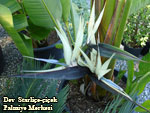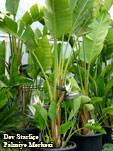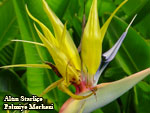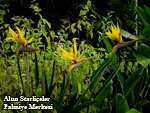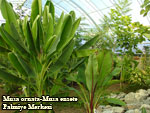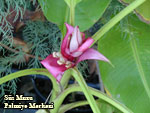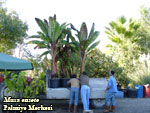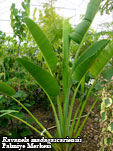 |
| |
|
STRELITZIAS - BIRD OF PARADISE FLOWERS |
|
Bird of Paradise Flowers
are belong to the Strelitziaceae family. The most known
strelitzias scientific name is Strelitzia reginae. However,
there are four other, less well known types. These perennial
plants are found naturally in the bush around Port Elizabeth
in the eastern Cape and in the northern and the southern
Natal at RSA. |
|
STRELITZIA REGINA – BIRD OF PARADISE PLANT This plant, known as
Strelitzia in our country, is currently marketed as the most
expensive cut flower, and is reproduced from seeds or by
dividing large clumbs. It is brush type plant. It has long ,
elliptical leaves and can reach 1 – 1.5 meter height.
Annually it propagates after flowering, forming groups from
a single plant. When grown from seed, it takes at least four
years before flower is produced. It is not resistant to
frost, but can tolerate down to – 4 C, for short periods. |
|
STRELITZIA JUNCEA – DWARF STRELITZIA Although, known as dwarf strelitzia, this description is not entirely correct, as due to its long leaves, it is relatively tall. It has been reproduced first time Turkey in our Palm Center, which is struggling to add new species to the current list. This species although having same type of flowers, have much thinner leaves which almost have the shape of a sword. The flowers of clumps, create a pleasant sea of colours among the thin leaves. |
|
STRELITZIA NICOLAI GIANT STRELITZIA-NATALS WILD BANANA This Giant Banana of Natal, known as Giant Bird of Paradise
Plant, is much taller than other Strelitzias and reaches 8-10 meters height.
These too make clumps as the other Strelitzias. Each leave reaches 1 meter
length with a 2 meter long stalk. They form a stem in time. Its flowers are 45
cm long, in the form of a thick bird peak, in white-grey colour. Flower stalks
are pink-green and each stalk can have 1-3 flowers. Generally flowering is in
summer. |
|
STRELITZIA REGINAE GOLD – GOLDEN STRELIZIA
|
|
|
BANANAS |
|
Bananas are in general edible fruit bearing plants of South-East Asia. Many varieties have been produced by hybridisation between natural varieties. Musa paradisiaca is one of them. In our country many varieties are in cultivation, except Musa paradisiaca. |
|
Ornamental BaNaNa Musa ornata Musa ornata has roots resistant to frost (-10 - -12 deg C). It originates from India and Myanmar (old name Burma). Its height does not exceed 250-300 cm, grows fast and produces many offsprings. It has dark green narrow elegant leaves with brown stripes and patches, reaching 150-180 cm in length. It has yellew-orange flowers at the end of long stalks, with a rose pink sheath over the flower. Its flowers are often used as cut flowers in tropical flower arrangements. As like other bananas, they like permebakle soil with high humus content and plenty of sun light. For fruit it is recommended to plant more than one seedling. Propagation is obtained from seeds or offsprings. In areas with frost, the roots have to be protected with mulch (preferably with goat, sheep manure). |





